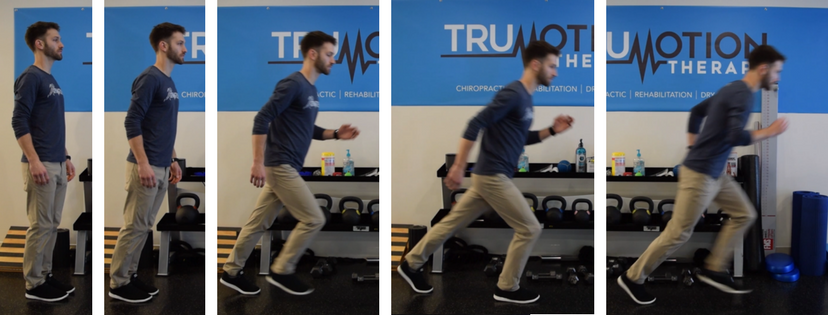January 17th, 2018
Running seems like a simple enough task, but like any movement in athletics, it’s a skill. Unfortunately, most people don’t view running as a skill, so attention is not given to ensure people are doing it efficiently.  There are subtle nuances in the running stride that can lead to an excess loss of energy, something I call an “energy leak.”  We want to minimize these energy leaks by making our running stride as efficient as possible.
As a chiropractor that works frequently with runners, I see a lot of different running styles. Your running style is like your fingerprint. Everyone’s will be a little bit different, but when there are big variations from the norm (energy leaks) a runner may be more likely to get injured.  Below I have listed 3 of the most common running stride faults and strategies for how you can fix them.
THE OVERSTRIDER
The Problem: This is one of the most common running stride faults. When runners overstride they strike the ground with their foot too far in front of their body.  Running this way is like putting on the brakes with each step. It also sends more ground reaction forces up the leg, which may lead to injury.  In distance runners a shorter, quicker stride is more energy efficient than a long laborious stride.
The Fix:
- Running is essentially a controlled fall.  If you stand straight then allow your body to lean forward at some point you are going to need to catch yourself with your foot.  Do this over and over, and you’re running!  You want your foot to land under your center of mass.

- Have a slight forward lean when you run. Let gravity be your friend. Land your foot close to under your body.
- Running to a metronome can help train a quicker, shorter stride. Â Apps like RunCadence make this easy to do.
THE BOUNCER
The Problem: So we want to move forward (horizontal) when we run, right…? There will be some bounce in a good stride, but too much vertical oscillation is an energy leak!
The Fix: Try to keep your eyes level with the horizon, and think “soft feet.” Use the drill below to help drive this home.
THE TWISTER
The Problem:  This is common in younger runners who haven’t learned to control their body yet.  The core is used to resist rotation when running.  If the core is weak, we get “The Twister.”
The Fix:Â Â Anti-rotation core work is a great form of exercise for all runners. Â Below are some video examples.
For a full running stride evaluation or for treatment of a running injury schedule an appointment with us! I (Dr. Sankey) will take you through a gait analysis and a running-specific functional movement screen. We will discuss your previous and/or current injuries as well as your goals as a runner. Just click here to get started.





